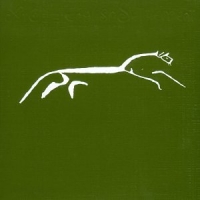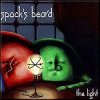/PAlogo_v2.gif) |
|
Post Reply 
|
Page <123> |
| Author | ||
MikeEnRegalia 
Special Collaborator 

Honorary Collaborator Joined: April 22 2005 Location: Sweden Status: Offline Points: 21862 |
 Posted: July 16 2005 at 09:56 Posted: July 16 2005 at 09:56 |
|
|
Do you know if there's a definite rule to determine if something is 7/4 or 7/8? |
||
 |
||
goose 
Forum Senior Member 
Joined: June 20 2004 Location: United Kingdom Status: Offline Points: 4097 |
 Posted: July 16 2005 at 09:31 Posted: July 16 2005 at 09:31 |
|
|
The guitar riff in Money accents the first and fourth beat, which is what makes it sound like a slow 7/8.
|
||
 |
||
MikeEnRegalia 
Special Collaborator 

Honorary Collaborator Joined: April 22 2005 Location: Sweden Status: Offline Points: 21862 |
 Posted: July 16 2005 at 08:49 Posted: July 16 2005 at 08:49 |
|
The guitar riff in Money is a 7 beat riff, that's true. If you don't have Alien Love Secrets ... I highly recommend the DVD. Kill The Guy With The Ball is just insane ... Polyrhythms in perfection. |
||
 |
||
Certif1ed 
Special Collaborator 

Honorary Collaborator Joined: April 08 2004 Location: England Status: Offline Points: 7559 |
 Posted: July 16 2005 at 08:40 Posted: July 16 2005 at 08:40 |
|
I'm not so sure - I can hear a definite 7 beats in the guitar lines. Maybe that was just Nick's way of coping with it - he's hardly the ultimate drummer of all time - although he's definitely the very best drummer in Pink Floyd... I don't own a copy of "Alien Love Secrets" - but I know that Vai pulls off complex time signatures with ease - as he does with practically everything else he does. The man is so insanely gifted
|
||
 |
||
MikeEnRegalia 
Special Collaborator 

Honorary Collaborator Joined: April 22 2005 Location: Sweden Status: Offline Points: 21862 |
 Posted: July 16 2005 at 08:14 Posted: July 16 2005 at 08:14 |
|
I think that Money is also what you describe as a "fake" 7/4. When you listen to the bass/snare you'll get: 1 2 3 4 1 2 3 it's really just 4/4 3/4 ... and nothing's wrong with that. Steve Vai - Die To Live is a good example for a "true" 7/4 song: 1 a 2 a 3 a 4 a 5 a 6 a 7 a Edit: the editor replaces many consecutive blank characters with garbled code, so I used dots ... just ignore them.
Edited by MikeEnRegalia |
||
 |
||
goose 
Forum Senior Member 
Joined: June 20 2004 Location: United Kingdom Status: Offline Points: 4097 |
 Posted: July 16 2005 at 07:05 Posted: July 16 2005 at 07:05 |
|
|
5/4's different to 10/8 just like 3/4 is different to 6/8 though

|
||
 |
||
Progbear 
Prog Reviewer 

Joined: July 14 2005 Location: CA Status: Offline Points: 139 |
 Posted: July 16 2005 at 04:14 Posted: July 16 2005 at 04:14 |
|
|
First of all, a bit of confusion over the whole 3/4 vs. 6/8 thing. Yes,
both have the same number of eighth notes per measure, but they’re NOT
the same. 3/4 is triple time (three beats per measure) whereas 6/8 is
duple (compound 2/4, essentially). It’s music theory as opposed to
mathematics. But it can add up; oftentimes you hear composers
alternating bars of 3/4 and 6/8 continuously throughout a piece (I’ve
even seen this notated as having BOTH time signatures at the beginning
of the manuscript!)
As for “complex” time signatures (i.e.: those not divisible by 2 or 3), it’s up to the whim of the composer, really. I generally subscribe to the KISS principle, though that can be taken to extremes, too (like my former jazz instructor, who insisted that everything be notated in 2’s, 3’s and 4’s). On the other hand, I’ve seen John McLaughlin’s scores where he’s notated tunes as 10/8 (“The Dance of Maya”), 14/8 (“Lila’s Dance”) and 18/8 (“Birds of Fire”). Why he chose that method rather than, say, 5/4, 7/4 and 9/4 isn’t something I can explain, though I’m certain he had his reasons. As opposed to, say, the fractional notation (e.g.: 3½/4) that appeared on some Bartók pieces, which just seems like showing off. ------------- MIKE (a.k.a. "Progbear") "That's my purse! I don't know you!" --Bobby Hill N.P.:nothing |
||
 |
||
alan_pfeifer 
Forum Senior Member 
Joined: December 05 2004 Status: Offline Points: 823 |
 Posted: April 26 2005 at 22:20 Posted: April 26 2005 at 22:20 |
|
Hmm, seems a bit complicated, but whatever works for you. |
||
 |
||
sigod 
Forum Senior Member 

Joined: September 17 2004 Location: London Status: Offline Points: 2779 |
 Posted: April 13 2005 at 07:52 Posted: April 13 2005 at 07:52 |
|
|
Genesis' 'Turn It On Again' is in 13/8 which I think is a great rhythmic device as you hardly know the odd time is there.
Pushing it further however, it gets EVEN more complicayed when you get into polyrhythms, which are two time sigantures that play over one another i.e. 7/8 over 4/4 or even incorporating triplet figures over straight fours....  And don't get me started on rudimentary sticking... Edited by sigod |
||
|
I must remind the right honourable gentleman that a monologue is not a decision.
- Clement Atlee, on Winston Churchill |
||
 |
||
Guests 
Forum Guest Group 
|
 Posted: April 12 2005 at 13:34 Posted: April 12 2005 at 13:34 |
|
|
I am posting on this thread again to see if anyone adds anything new or interesting.
|
||
 |
||
Certif1ed 
Special Collaborator 

Honorary Collaborator Joined: April 08 2004 Location: England Status: Offline Points: 7559 |
 Posted: March 30 2005 at 07:17 Posted: March 30 2005 at 07:17 |
|
|
It's not 7/8, it's 7/4. Dave's wrong That's because you can count 7 easily and regularly - there is no compound time, it is purely simple. If it was 7/8, then there would not be 7 beats, but 2 and 1/3 beats per bar, and the whole "feel" would be quicker, as you note. |
||
 |
||
JrKASperov 
Forum Senior Member 
Joined: July 07 2004 Status: Offline Points: 904 |
 Posted: March 30 2005 at 05:47 Posted: March 30 2005 at 05:47 |
|
When counting, I usually find that with that 7/4 I count to 3.5. 1...2...3.1..2..3 When I come up with a half, I simply multiply it with two to come up with the desired number . |
||
|
Epic.
|
||
 |
||
Hierophant 
Forum Senior Member 
Joined: March 11 2005 Location: United States Status: Offline Points: 651 |
 Posted: March 30 2005 at 04:26 Posted: March 30 2005 at 04:26 |
|
|
Planet X - 2116 heh... Try counting that one.
|
||
 |
||
alan_pfeifer 
Forum Senior Member 
Joined: December 05 2004 Status: Offline Points: 823 |
 Posted: March 29 2005 at 17:35 Posted: March 29 2005 at 17:35 |
|
|
Well as a drummer, being able to count time sigs is a nessecary ability, and listeng to prog has definitly in that department. But I find that you can ususaly figure out the time signature if you listen to where the drummer places a crash cymbal. also, many of the higher time sigs like 6/8 or 7/4 are ,much easier to count when broken up. |
||
 |
||
Guests 
Forum Guest Group 
|
 Posted: March 29 2005 at 11:32 Posted: March 29 2005 at 11:32 |
|
|
I have a music book with all the sheet music for DSOTM and the publisher wrote Money as being a measure of 3/4 followed by a measure of 4/4. This combination is repeated. I really don't think Pink Floyd would have been obtuse enough to write it this way. I think the transcriber probably was just an airhead who did it this way. |
||
 |
||
Ben2112 
Forum Senior Member 
Joined: March 15 2005 Status: Offline Points: 870 |
 Posted: March 28 2005 at 21:54 Posted: March 28 2005 at 21:54 |
|
|
Regarding the 7/8 vs. 7/4 issue, I had always counted "Money" by Pink Floyd in the 7/4 time. However, if you watch the making of Dark Side... DVD, Dave says it's in 7/8. Wow, that would be a SLOOOOW 7/8. I guess it does just come down to where you consider the bars/measures to fall.
|
||
 |
||
Guests 
Forum Guest Group 
|
 Posted: March 24 2005 at 16:18 Posted: March 24 2005 at 16:18 |
|
|
Probability-wise, 4/4 is nearly always your best bet. I always start by counting in 4/4 time at a moderate tempo: 1 and 2 and 3 and 4 and... If it works out great, the song is probably in 4/4, 2/4, 2/2, or 12/8. I always test 4/4 first because most music (even much of prog, at least partly) is in 4/4. I should also recommend using our beloved Internet as a "cheat sheet" for a few of the tunes causing you difficulty. For example, if I wanted to know the meters for Yes's Sound Chaser, I would do a Google search: Sound Chaser time signature. I play guitar, and this is how I crack a lot of these songs. For example, for the guitar solo in Tom Sawyer by Rush, I could NOT crack that time sig until I broke down and did a search for it. Right away, I found it was in 7/8. This is a time signature used a lot by the band. ie. intro to Anthem, intro to Subdivisions, Freewill, Natural Science, Distant Early Warning. I mention this, because a lot of bands have favorite meters that they like to write in. Yes uses 5/4 a bit (Sound Chaser, 5 percent for nothing). A few more ideas for you. When a new, for lack of a better term, "movement" or "impression" begins or when a new feel begins, I usually start counting again, just to be sure they have "tricked" me by slipping into a new meter. These movements may be signposted by a new chord progression. Finally, here is a site that could fill in the crack for ya: http://en.wikipedia.org/wiki/Time_signature Good luck! Edited by Crimson Prince |
||
 |
||
penguindf12 
Prog Reviewer 

Joined: September 20 2004 Location: United States Status: Offline Points: 831 |
 Posted: March 24 2005 at 15:38 Posted: March 24 2005 at 15:38 |
|
|
Gotcha.
|
||
 |
||
goose 
Forum Senior Member 
Joined: June 20 2004 Location: United Kingdom Status: Offline Points: 4097 |
 Posted: March 24 2005 at 12:39 Posted: March 24 2005 at 12:39 |
|
|
The problem is with all modern music (this doesn't just apply to time signatures) is that notation hasn't changed nearly so much as styles have. In the classical period, a time signature (along with some sort of idea of the feel and tempo) could tell you exactly how to accent the music, (apart from when there were deviations from the pattern, and they could be marked individually). Now, however, there is so much different that can be done in any time signature, that they're nowhere near as rigid as they were. Since a time signature is only a way of notating the music that's heard, while sometimes there may be one definitive time signature that is obvious (often in more simple music, for example "Creep", by Radiohead is clearly in 4/4, with one chord per bar. There's not really any other way of writing it that makes sense, because it does stick to the same sort of metre that's been in existence for a very long time), a lot of the time you could fit a number of time signatures to the same music (often 6/8 and 2/4 (both have 2 main beats), or 9/8 and 3/4 (both have 3 main beats), but sometimes multiples like 6/8 and 12/8). In this case, it doesn't matter how you look at it, as long as if you're playing in a group you all play with the right sort of "feel". Basically, any sort of notation (apart from the actual pitches given) are simply a means to the end of playing in the right way. I'm finding this very difficult to explain, because it's a very abstract concept, but I hope I'm being some help. |
||
 |
||
penguindf12 
Prog Reviewer 

Joined: September 20 2004 Location: United States Status: Offline Points: 831 |
 Posted: March 24 2005 at 12:09 Posted: March 24 2005 at 12:09 |
|
|
So what you're saying is....it really doesn't matter 'cause to tell the precise time you have to see the sheet music? And that you really can call something any time signature you want, but the "actual" time signature is the one that makes sense the most?
|
||
 |
||
Post Reply 
|
Page <123> |
| Forum Jump | Forum Permissions  You cannot post new topics in this forum You cannot reply to topics in this forum You cannot delete your posts in this forum You cannot edit your posts in this forum You cannot create polls in this forum You cannot vote in polls in this forum |